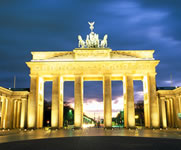
Almost 2,000 years ago the Romans built their only imperial road across the Alps - the Via Claudia Augusta. It stretched from the Adriatic town of Altinum near Venice and the ancient ferry port of Hostiglia (now Ostiglia on the river Po) across the Reschen Pass and the Fern Pass to the Danube. This 500 kilometre military supply route was for centuries the most important connection between the Roman motherland and its rich provinces to the north. The road is an impressive example of how Roman road building conquered nature. As with the aqueducts, the Roman water channels, they surmounted all obstacles; no hill was too high and no river too wide for the Roman road builders.

To enable rapid military operations and to be able to move their legions quickly, the Romans needed well-paved roads on solid foundations that could withstand the impact of the soldiers' nailed boots, their pack animals and the heavy iron-clad wheels of their carts. Paved roads and highly developed vehicles revolutionised transport. The Romans also brought their own language and script, their form of government, religion and laws, calendar, coins and many other trappings of civilisation with them across the Alps. Numerous reminders of this historical lifeline as well as some remains have been preserved in many places, often reflected in today's road network. But you can also experience plenty of the peculiarities of the regions, periods, people and cultures along this imperial Roman road - on the cycle paths, hiking trails or in a car. Whether by bike, on foot, by car or on a coach with expert commentary - tracing the footsteps of the Romans along the Via Claudia is always a pleasure.
 Skip to content
Skip to navigation
Skip to subnavigation
Skip to search
Skip to content
Skip to navigation
Skip to subnavigation
Skip to search







